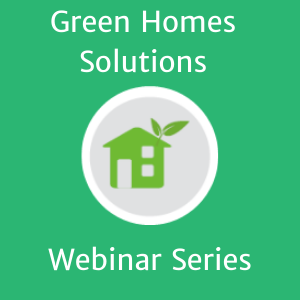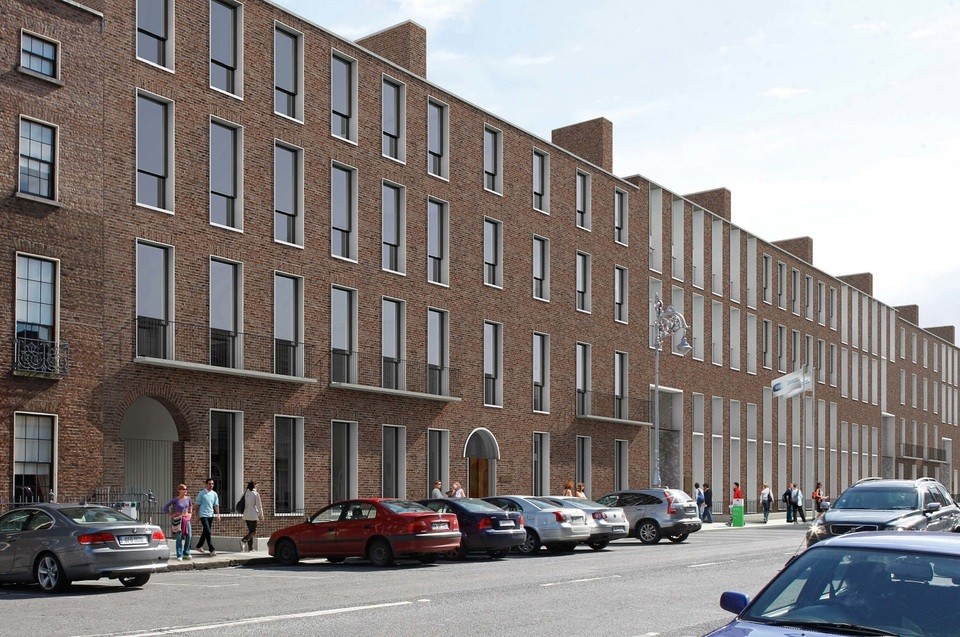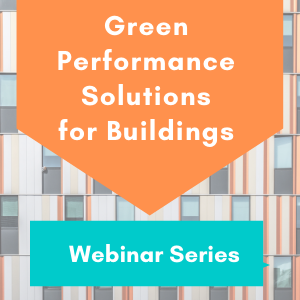Green building policy and training in Ireland

Nearly Zero Energy Buildings & Part L
The requirement for Nearly Zero Energy Building is set out in the European Energy Performance of Buildings Directive (EPBD). Follow this link for further information. nZEB is implemented through the Technical guidance documents Part L Conservation of Fuel and Energy of the Building Regulations which came into force in 2019. This section includes a combination of webinars and reading materials for both residential and non-residential buildings. Here you can also find materials on Aritighness, Green products and Energy Renovation. Resources on the World GBC’s more ambitious net-zero carbon are set out separately under Zero Carbon.
Home » Learning Hub » Energy and Carbon
Zero Carbon Buildings
Nearly Zero Energy Buildings for Residential

Ventilation Approaches for nZEB Homes
Gary O’Sullivan, NSAI & Justin Conwy, Aereco
Archie O’Donnell, i3PT and Justin Conway, Aereco
Implications of the new Part F – The new part F requires design and commissioning of ventilation systems by accredited designers and installers. What will implementation look like? How will the new Accredited designer/commissioner ventilation scheme works?
MembersNon Members
Assessing Overheating Risk
PJ Ryan, Ethos Engineering
Overheating must now be assessed as part of the regulations. What are the implications for practitioners? What impact do glazing ratios have, and how can overheating be avoided at design stage? Who can assess this? What is TM 59? What are the obligations under the new regulations?
MembersNon Members
Introduction to nZEB for Residential
Orla Coyle, SEAI & Emmanuel Bourdin, Department of Housing
This webinar looks at the requirements within the new Part L – Dwellings. What are the transition dates? What does the final version of Part L look like? What are the changes within the revised DEAP software? What should designers be aware of?
MembersNon Members
Water Efficiency and nZEB
Yvonne Orgill, Unified Water Label
Water efficiency will play a key role in complying with the new Part L particularly for apartments – This webinar looks at the Unified European Water label and the Water calculator, considering the connection between water efficient sanitary ware and energy efficiency.
MembersNon Members
Renewable Systems for nZEB Homes
Xavier Dubuisson, XD Consulting and Gerhard Heyl, PV Green Energy Solutions
John Morehead, Wain Morehead Architects and Matthew Theloke, OCSC
How to meet the Renewable Energy Ratio requirements within the revised Part L? What are the advances in Photo Voltaic technology and what opportunities do battery storage offer? What other forms of renewables are viable for Irish homes?
MembersNon Members
Heat Pumps for nZEB Homes
Padraic O’Reilly LIT
Designing for heat pumps – what designers and contractors need to know. How is the RER calculated for Heat Pumps?
MembersNon Members
Fabric Efficiency, Thermal Bridging in nZEB Homes
Andy Lundberg, Passivate
What are the implications for additional insulation within the new Part L? What does this mean in terms of the different wall build ups. How can thermal bridge assessment help?
MembersNot MembersKey Reading Material
Green Products

Air Source Heat Pump & nZEB Compliance
Niall Duffy, Daikin
Heat Pumps are an innovative renewable energy solution for heating new homes. How do air source heat pumps work? How do heat pumps reduce energy consumption? How do heat pumps meet nZEB requirements?
View webinar
Ventilation Solutions for New Homes
Hugh Whiriskey, Partel
Designed ventilation systems are vital to energy efficient buildings. What range of ventilation options are available? Which different types of ventilation are suitable for different scenarios?
View webinar
Airtightness & Moisture Management in Buildings
Niall Crosson, Ecological Building Systems
What is airtightness? Why does it matter? What are the causes and effects of poor moisture management? What are the current and future airtightness standards?
View webinar
Renewable Energy in the Built Environment
Finnbar Howell, KRA Renewables
Overview of what renewable technologies are appropriate for building-integration, including significant economic factors for investments, and dispeling some common myths.
View webinar
nZEB for New Builds
Andrew Butler, KORE
A fabric-first approach is essential when building or renovating a low energy home. This presentation explores the key features of Kore’s insulation systems
View webinarEnact webinar series

What is changing for commercial buildings- Policy and legislation
This Enact explainer webinar covers the policy and legislation changes for commercial buildings on national and European levels. it shows how these changes look in practice and different initiatives that help commercial building owners.
MembersNon Members
Nearly Zero Energy Buildings for Commercial

ESB Headquarters, Fitzwilliam Street-Case Study
Chris Croly from BDP, presented a case study on the new ESB offices in Fitzwilliam Street. His presentation offered a view of next generation sustainable design in large office buildings.
MembersNon-Member
Introduction to nZEB for Commercial
Orla Coyle, SEAI and Sean Armstrong, Building standards, Department of Housing
This webinar looks at the requirements within the new Part L. What are the transition dates? What is changing in terms of backstops and additional calculations? How is compliance measured in SBEM? What is changing in the compliance software – SBEM?
MembersNon Members
Fabric Efficiency, Thermal Bridging in nZEB
Andy Lundberg, Passivate.
This webinar looks at the implications of the improved backstops for non-residential buildings. How can we avoid thermal bridging in typical commercial or non-residential development such as in basements, facades and other typical junctions.
MembersNon Members
Ventilation Approaches for Offices
Chris Croly
For the commercial sector, the efficiency of the services will play a key role in achieving the nZEB standard. By minimising the energy use from first principles we reduce the final requirement for renewables. How does the concept design for solar shading, lighting, ventilation and cooling play a part?
MembersNon Members
Meeting the Renewables Energy Ratio (RER)
Edith Blennerhassett, Arup and Luis Gay-Tarazona Arup
How can we meet the requirements of the Renewable Energy Ratio (RER) for non-residential projects? What are the different options to suit different circumstances and locations?
MembersNon MembersAirtightness

Airtightness and Ventilation
It is important to use architects, builders and trades who have upskilled in quality, low-energy construction. An airtight building is an energy efficient building. If the builder does not build carefully, the warmth you paid for leaks out.
Watch Video
Finding Air Leakages
This video demonstrates methods to find air leakages when checking for airtightness in a building
Watch Video
Setting Up for a Preliminary Airtightness Test
This video explains the whys and hows of setting up for a Preliminary Airtightness test.
Watch VideoGreen Performance Solutions for Buildings

Ventilation in Offices in the Covid -19 era
Presenters: John Burgess & John Smyth, Arup
What are the considerations for getting back to work in the office in terms of Covid 19? What is the impact on energy use of increasing air change rates? Is it possible to make offices safer without increasing energy cost and carbon emissions? This webinar explores what is seen to be best practice when dealing with the issues.
MembersNon members
Managing Energy in Existing Buildings
Presenters: Brendan Murphy, Burlington Engineering & Aidan McDonnell, Acutrace
How can we reduce energy in existing buildings by the simple maxim of measure and reduce? What tools are available and what reductions are possible? Are the oldest buildings really the worst and what are the key features that are likely to lead to energy waste? How can I get on a path to deep savings?
MemberNon Member
Green Maintenance for Green Buildings
Presenter: Paul Giles, SAP Landscapes & Rachael McGinley, CBRE
It is one thing to build a certified LEED Building, with green non-toxic low emissions materials, a biodiversity plan, etc but how do we keep it that way? how do we implement a green maintenance programme? What does the implementation of a biodiversity management plan look like? How do we ensure that proper waste segregation is taking place and it is easy for occupants to use it?
MembersNon Members
Designing for Performance
Presenter: Bill Bordass, Building Performance Consultancy
How do we ensure that buildings are handed over in a way that the tenant can operate them properly, in the way they were intended to be operated? How can the soft landings framework help and how can it complement environmental assessment tools used such as BREEAM and LEED? How can it be used to close the loop between design performance, and post-occupancy to develop better buildings?
MembersNon Members
The Green Room 2021
Presenters: Chris Pyke -Arc Skoru, Orla Coyle – SEAI, Rachel McGinley – CBRE Ireland, Chris Botten – Better Building Partnership
IGBC’s annual conference on commercial sector.
How to improve the performance of new and existing buildings.
MembersNon Members